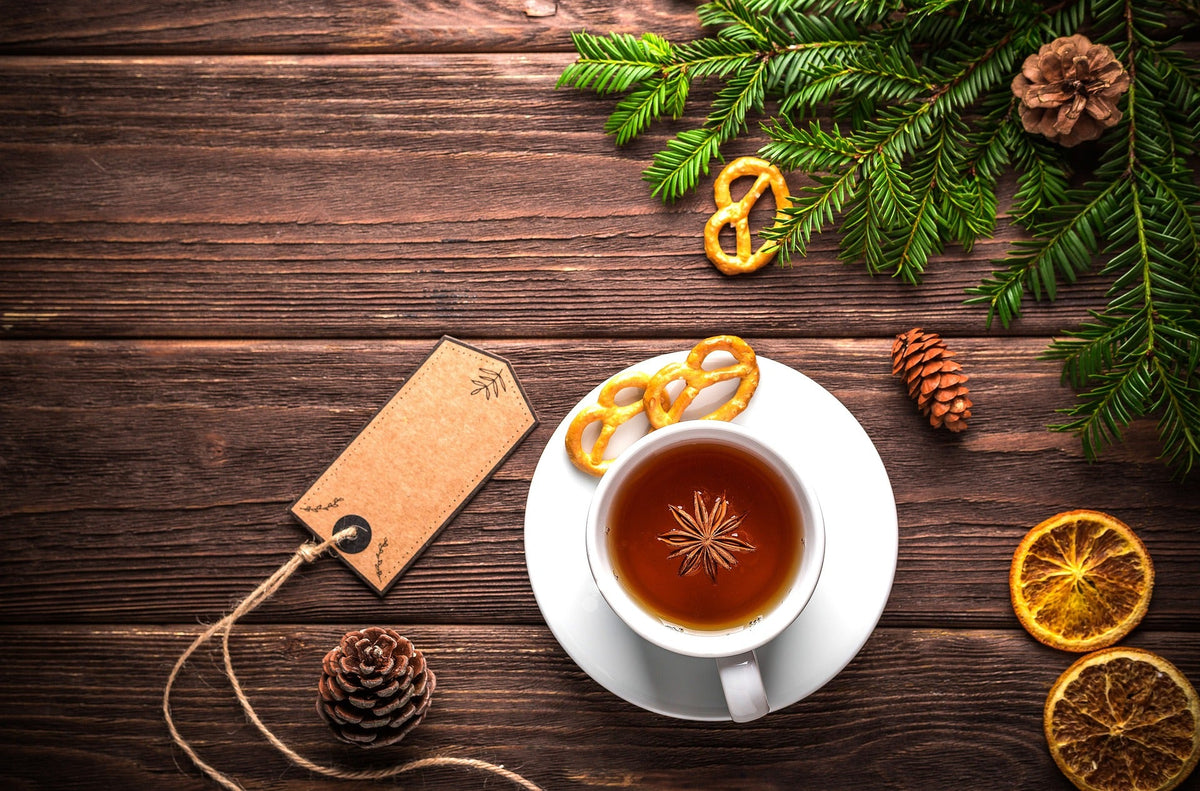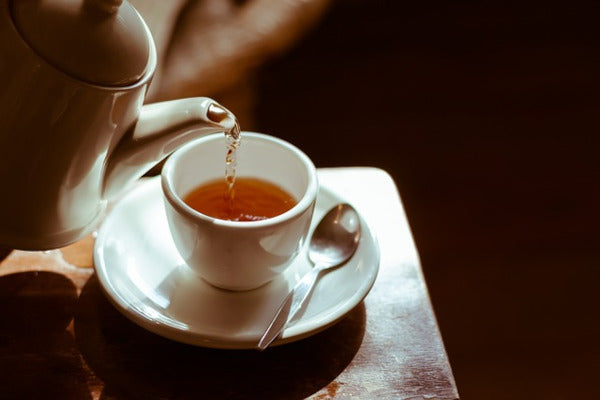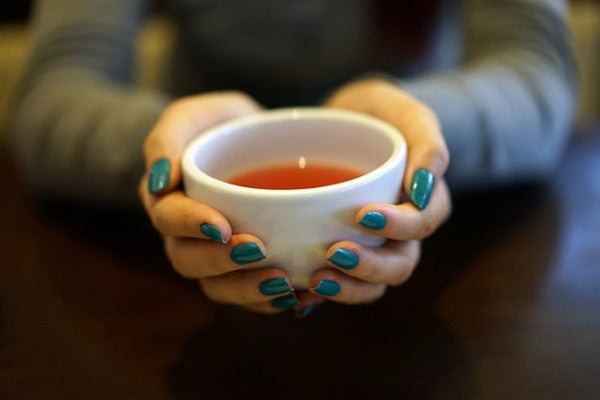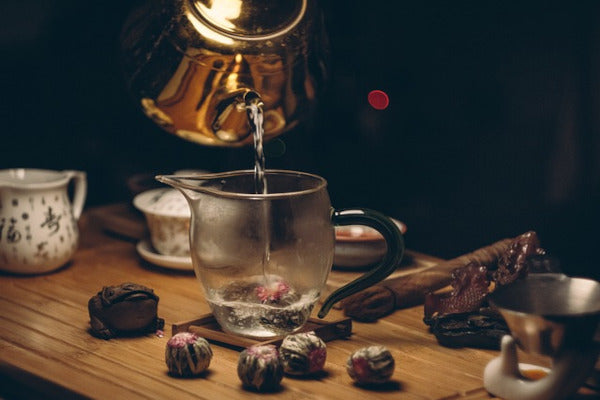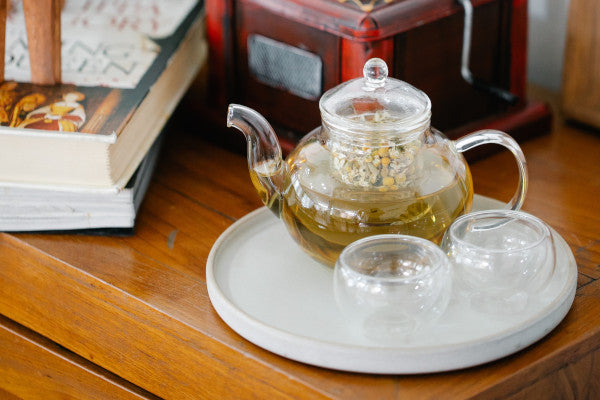Oolong tea is native to China and literally translated as "dragon tea." Its production is quite different from other types of tea and requires a great deal of manual labor.
In its country of origin, oolong tea is typically served with meals and fatty foods. Oolong tea is a very special tea, significantly different from the strong aromas of malty Assam tea, fresh green Darjeeling tea , which is often slightly bitter, and aromatic Ceylon tea .
As with all other types of tea, there are numerous oolong varieties with different flavors and aromas that tantalize your senses. Many oolong tea beginners first start with "Orange Oolong," a classic oolong tea with an intense orange flavor. But good varieties are made with only orange blossom and orange peel, which develop a wonderfully smooth yet powerful flavor.
The mild but aromatic oolong tea originates in China and is neither a green nor a black tea . It is therefore referred to as a semi-fermented tea , because the oxidation time is between that of black and green tea. All the tea leaves from the plant are green when harvested, but only through the fermentation process do they transform into dark, black leaves.
After picking the tea leaves, they are sun-dried at different lengths. After the drying process, they are stored in a dark room to rest. To accelerate the oxidation process, shake the tea leaves lightly or rub them between your hands.
Making Oolong Tea
For blue oolong tea, it's typical that only the edges of the outer leaves undergo fermentation, while the inner leaf remains almost green. True oolong tea lovers can tell the quality and degree of fermentation from an oolong leaf.
The fermentation time is longer for black tea than for oolong tea, which is crucial for the flavor and aroma of different oolong teas. Therefore, the key is the duration of the oxidation process. Some oolongs have a shorter oxidation time and resemble green tea in flavor, while others are closer to black tea , as they have been fermented for longer, always depending on the variety.
Fermentation is stopped when the semi-fermented oolong leaves are heated in a metal container. However, today, blue oolong tea is not only produced in China, but also in tea-producing countries such as India, Thailand, Malaysia, and Vietnam, and even in African countries such as Malawi and Kenya.
The best Oolong Teas
True connoisseurs identify four basic types of oolong tea. The first is Pouchon Oolong , which is only lightly fermented, with a fruitier, slightly bittersweet flavor.
Oolong Zhen Cha is fermented to 30 percent and is clearly more intense in aroma and fruity flavor. Oolong Cha is oxidized to 50 percent and its aromas are characterized by sweetness and smoky flavor.
Oolong tea with the name Kao Shan Cha is less fermented and is known as mountain tea with bright gold cup color, its flavor is delicate and rough at the same time.
Oolong teas contain more caffeine than green tea but significantly less than black tea, therefore Oolong teas have fewer tannins and are considered particularly beneficial.
The aromas of oolong teas are breathtaking; it's like embarking on a journey of flavors and tastes in the world of oolong tea, with its idiosyncratic characteristics. Every tea lover must first determine whether they prefer the spicy, fruity, and slightly smoky notes or the floral notes of oolong tea.
For premium oolong varieties from the finest plantations in China and Taiwan, buyers pay a higher price than usual. The advantage of oolong tea is that it can be steeped multiple times without losing its attractive flavor and aroma. The first oolong tea can be enjoyed within 1-4 minutes, depending on taste preferences; second infusions can be steeped for 3-5 minutes; and the third infusion can take up to 7 minutes.
The caffeine content is decreasing and won't hinder sleep. Oolong tea can be enjoyed in the afternoon or evening; simply steep it for about three minutes longer than usual to reduce the caffeine content.
Healing effects of Oolong teas
The Chinese have known for centuries about the healing effects of Oolong teas , from a health perspective, the amount of lower tannic acid is lower.
Many Asians also know about the compatibility of oolong teas with weight loss . As we know, the Chinese are leaders in the field of natural medicine today and famous for their traditional medicine. From their point of view, a daily cup of oolong tea aids in many metabolic processes, which is why blue oolong tea is served with fatty foods . This effect can be beneficial for dieting, but you shouldn't be tempted to eat more than the amount allowed by your chosen diet.
Scientists have determined that these chemical compounds, called polyphenols, may contribute to inflammatory prophylaxis and, furthermore, cancer prevention . As a side effect, they activate an enzyme that helps dissolve fats into triglycerides, which, according to traditional Chinese medicine, helps prevent the accumulation of unhealthy fat in blood vessels.
Oolong tea is also expected to contain valuable antioxidants that compete with free radicals in the body. Oolong tea can enhance detoxification, drainage, and cleansing processes in the body. Therefore, oolong tea is also a reasonably priced, healthy, and very tasty anti-aging agent.
If you want to enjoy the properties of this and other organic teas , visit our Tétique store.


